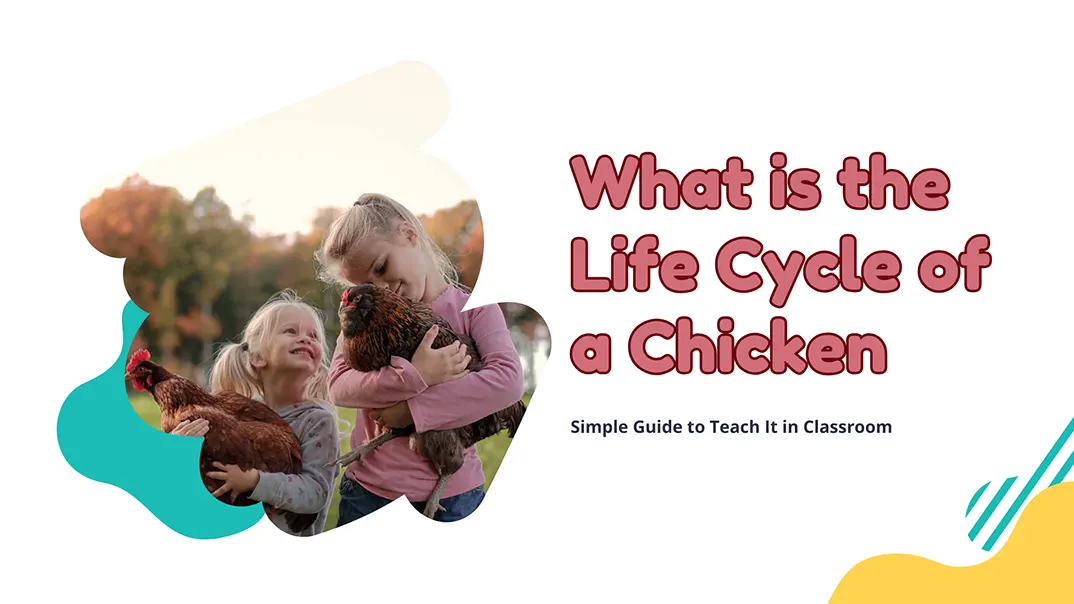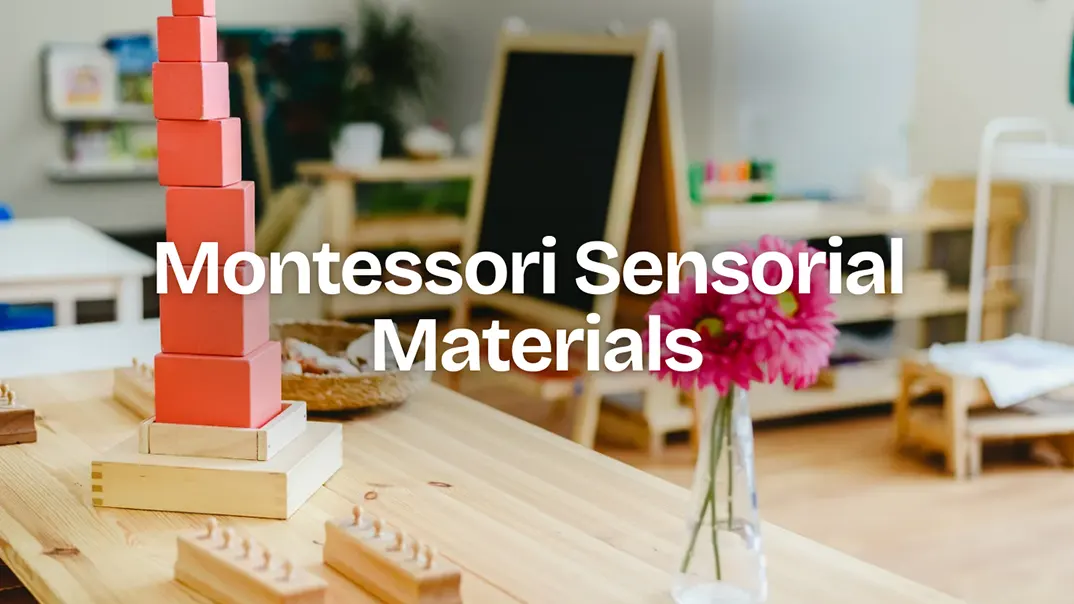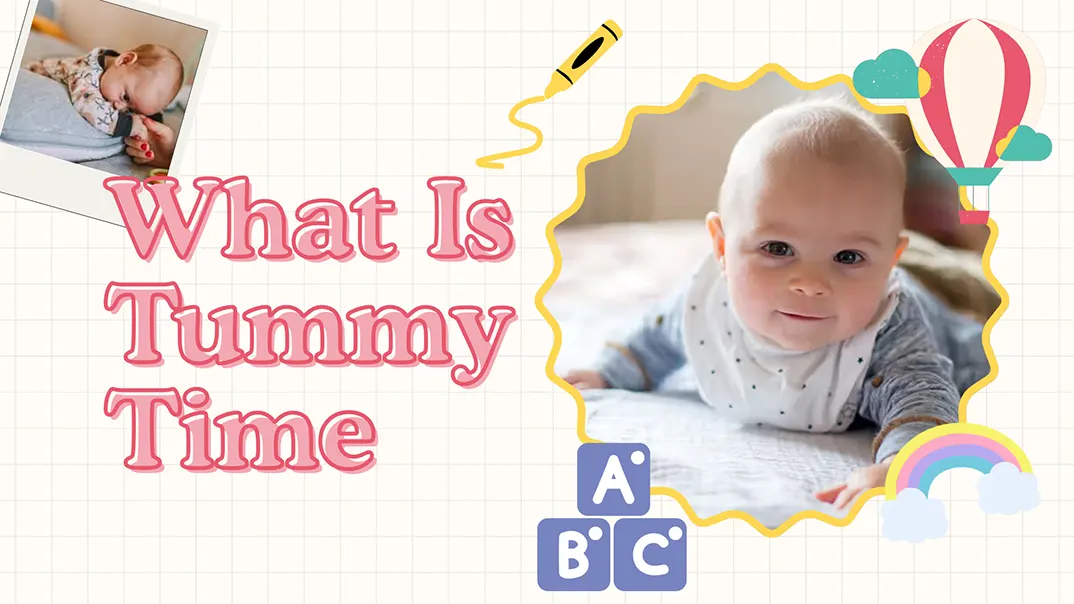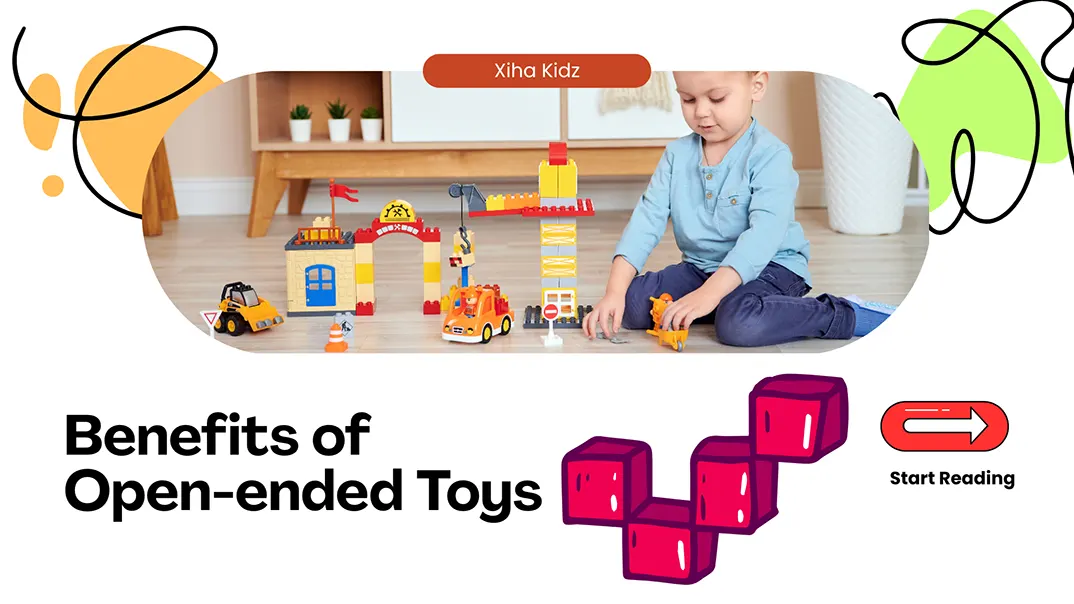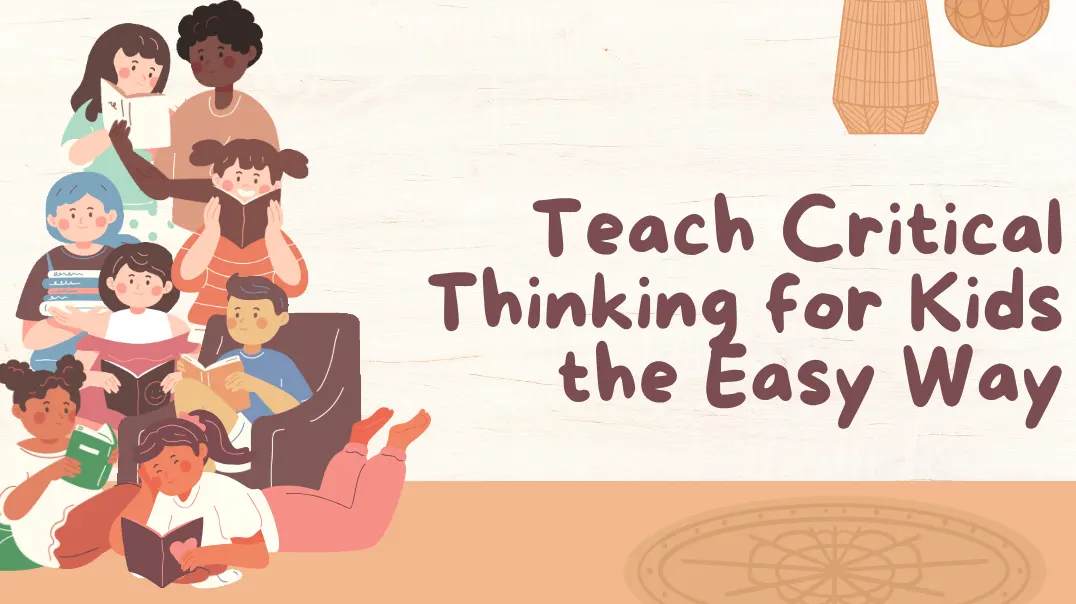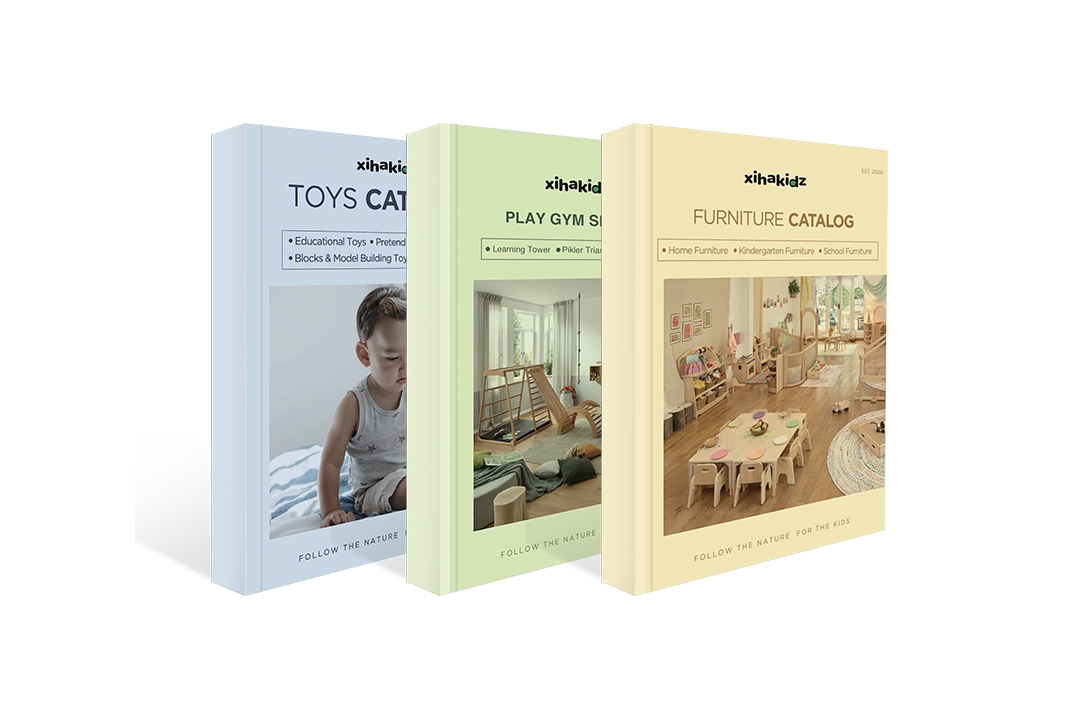Do your preschoolers pause when they see the word “the”? Do they skip over small, common words like “is,” “and,” or “you”? Many early readers struggle not because they can’t recognize letters or sound out words, but because they haven’t yet mastered preschool sight words. These high-frequency words appear everywhere—in beginner books, classroom labels, daily instructions—but they often don’t follow phonetic rules. As a result, children feel stuck, lose momentum, and reading becomes a source of stress rather than joy.
The good news is that preschool sight words can be taught in ways that are clear, engaging, and effective. When children begin to recognize these foundational words on sight, they gain fluency, confidence, and a stronger connection to the meaning behind the text. They start to read more smoothly, understand more easily, and participate more actively in classroom reading activities. Instead of guessing or memorizing in frustration, they develop real literacy skills that will support their learning for years to come. Mastering sight words early is one of the most powerful steps in preparing a child for long-term reading success.
In this guide, you’ll learn exactly how to make preschool sight words a natural and exciting part of your child’s learning journey. Whether you’re a parent, teacher, or preschool owner, you’ll find proven strategies, essential word lists, and engaging tools designed to build early literacy the right way—one word at a time. Let’s begin with the basics and unlock the path to confident reading together.
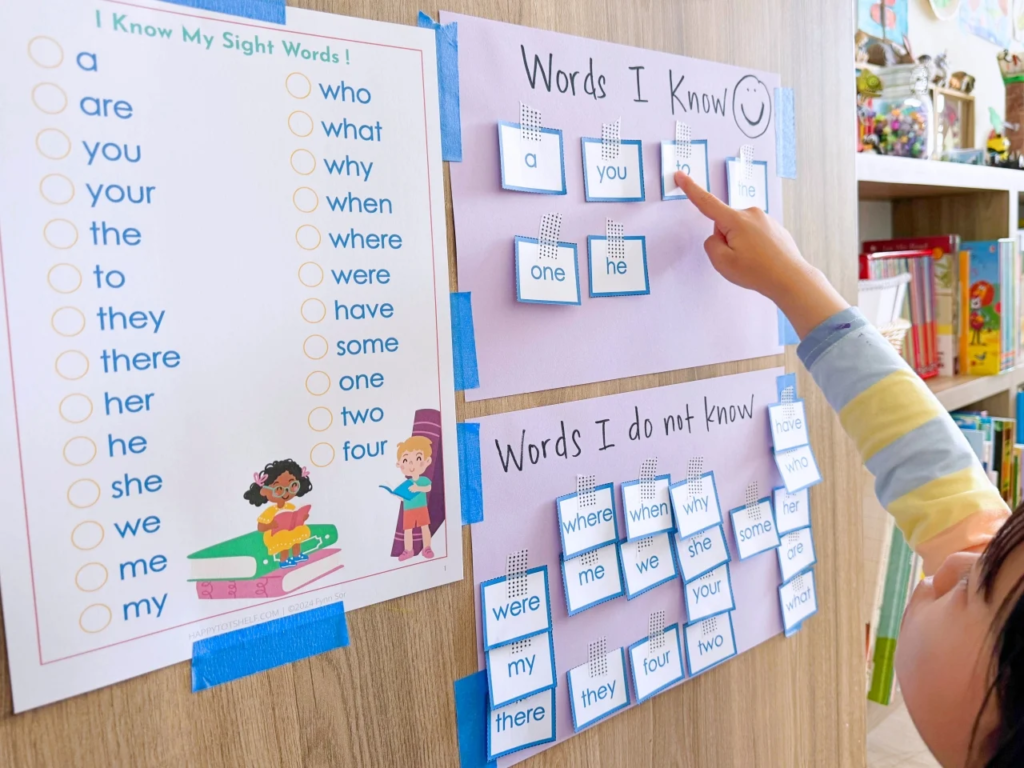
What Are Sight Words?
Preschool sight words are simple, frequently used words that young children are encouraged to recognize instantly—without having to decode or sound them out. These words form the foundation of early reading and are essential to helping preschoolers gain fluency, speed, and confidence in their reading journey. Think of words like the, I, go, to, and you—they appear so often in beginner books and classroom instructions that learning to read them by sight becomes a practical necessity.
Unlike most vocabulary words, sight words for preschool do not always follow regular phonetic patterns. That means children can’t reliably “sound them out.” For example, the word said doesn’t behave like it sounds. Instead, it needs to be memorized as a whole word. This is why educators introduce preschool sight words separately from standard phonics instruction. These words help children read fluidly and focus on understanding meaning, rather than getting stuck on decoding.
In short, preschool sight words are the bridge between knowing letters and reading full sentences. By mastering these essential words early, children take a confident step into literacy—a step that will support their academic growth for years to come.
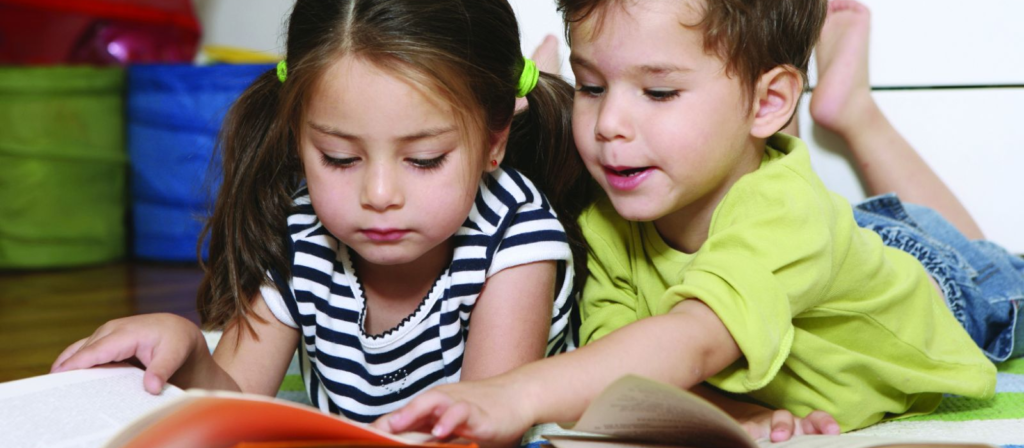
Why Are Sight Words Important for Preschoolers?
Preschool sight words are critical to early literacy because they allow children to read common words instantly, without needing to decode them letter by letter. At the preschool level, most children are still developing basic phonemic awareness and are not yet able to decode irregular words through phonics. According to the National Early Literacy Panel (NELP), automatic word recognition is a strong predictor of later reading success. Since sight words for preschool often include non-phonetic, high-frequency words like the, come, and you, memorizing them gives children access to meaningful text before they’ve fully developed decoding strategies.
Fluency, comprehension, and reading motivation are all closely linked to sight word mastery. A 2015 study published in The Journal of Educational Psychology found that students who recognized 25 or more sight words in preschool scored significantly higher on reading assessments in kindergarten and first grade. When children can quickly read sentences such as I like the dog or We go to play, they experience early reading success, which in turn increases their confidence and willingness to engage with books. In this way, preschool sight words not only support decoding skills but also foster a lifelong positive relationship with reading.
How Many Sight Words Should a Preschooler Know?
Most preschoolers are expected to recognize between 20 to 40 preschool sight words by the end of the Pre-K stage. This range aligns with commonly used lists such as the Dolch Pre-Primer Sight Word List, which includes foundational words like I, we, see, come, and look. These words frequently appear in beginner-level readers and classroom instructions, making them essential for early reading development.
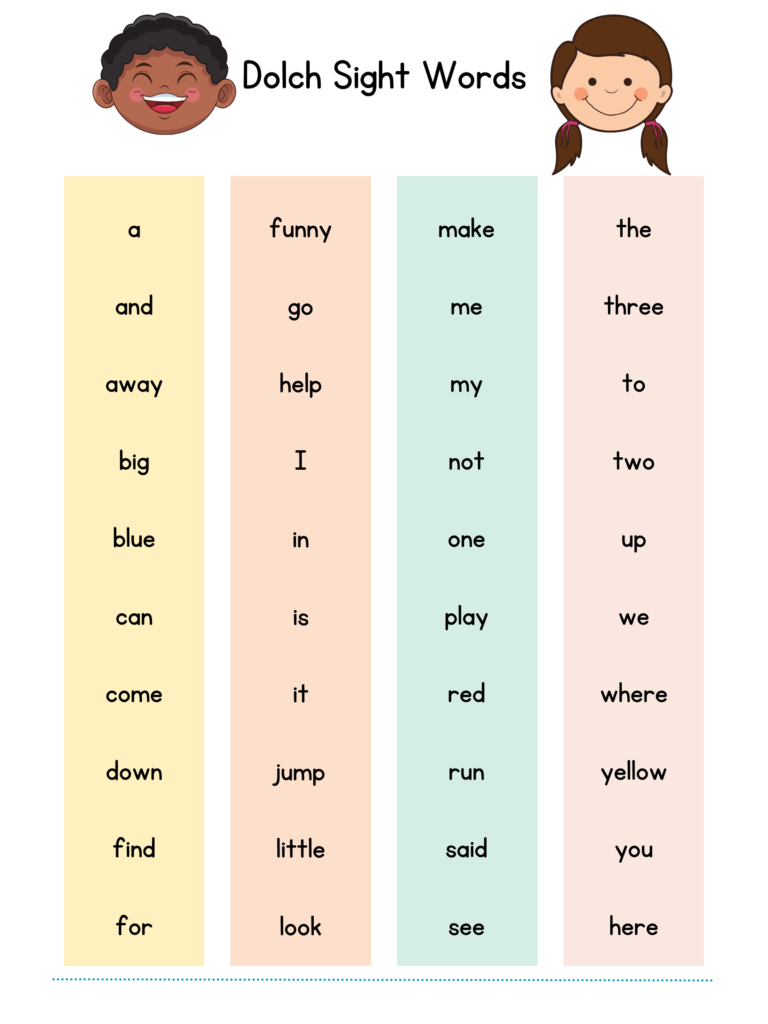
The appropriate number of sight words for preschool learners may vary depending on age, exposure, and individual readiness. Typically, introducing 2 to 3 new words per week ensures steady progress without overwhelming the child. By focusing on high-utility words within a consistent learning routine, children can gradually build the automatic recognition skills needed to transition into fluent reading.
When and How to Introduce Sight Words for Preschoolers
When to Introduce Sight Words for Preschoolers
The best time to introduce preschool sight words is when children begin to demonstrate consistent letter recognition and an emerging understanding of how words form meaning. This developmental stage typically occurs between ages 3.5 and 4.5, corresponding with most Pre-K programs.
At this point, children are developmentally ready to transition from identifying individual letters to recognizing whole words. Introducing sight words for preschool at this stage provides a bridge between learning the alphabet and reading simple sentences. It also supports vocabulary growth and builds early reading confidence.
Sight word instruction should begin gradually. Children should first master a small set of core words from an age-appropriate list—such as the Dolch Pre-Primer Sight Words—before progressing to more complex vocabulary. Starting too early or too fast can lead to confusion or memorization without understanding. A pace of 2 to 3 new words per week is both manageable and effective for most preschool learners.
ค้นพบผลิตภัณฑ์ทั้งหมดของเรา
เข้าถึงแค็ตตาล็อกที่ครอบคลุมของเราซึ่งมีเฟอร์นิเจอร์คุณภาพเยี่ยมและอุปกรณ์การเล่นสำหรับโรงเรียนอนุบาลและโรงเรียน
How to Introduce Sight Words for Preschoolers
Teaching preschool sight words requires a combination of repetition, engagement, and contextual learning. The goal is to make words instantly recognizable through natural exposure and interaction, rather than rote memorization.
Use Visual Labeling in the Environment
Label commonly used classroom or home items with printed sight words—such as door, chair, book, or table. This allows children to associate physical objects with written language, helping them absorb words passively through repeated exposure. For sight words for preschool, contextual relevance significantly improves retention.
Incorporate Sight Words into Daily Reading
During read-aloud sessions, pause and emphasize selected sight words. Encourage children to point them out as they appear in the text. Repeatedly seeing words like I, go, or see in different stories helps reinforce familiarity. Short, predictable books designed for early readers are ideal for highlighting preschool sight words in context.
Introduce a Word Wall or Word Folder
Create a sight word wall in the classroom or a portable word folder for home use. Each time a child learns a new word, add it to the collection. Reviewing this wall or folder daily keeps known words fresh and promotes a sense of achievement as the list grows. This method also helps children visually track their own progress in learning sight words for preschool.
Use Movement-Based Learning
Incorporate physical activities such as hopping to sight word cards, tracing letters in the air, or jumping on mats with printed words. Movement reinforces cognitive connections and increases engagement, especially for kinesthetic learners. Associating action with a word like run or up makes the word more memorable and fun to learn.
Engage with Flashcards and Picture Matching
Use flashcards to introduce and review target sight words, pairing them with pictures or simple drawings. This visual support helps children create mental associations and strengthens word recognition. Flashcards should be used in short, focused sessions, ensuring they remain effective and not overwhelming.
Limit Word Introduction and Focus on Mastery
Rather than pushing quantity, emphasize quality of understanding. Introduce 2 to 3 new preschool sight words per week and provide multiple opportunities for practice. Only move forward when children can confidently recognize the words in different formats—books, flashcards, or during conversation.

เปลี่ยนห้องเรียนของคุณด้วยโซลูชันเฟอร์นิเจอร์ที่ออกแบบเอง
Create a Literacy-Rich Classroom with Purpose-Built Preschool Furniture
To truly support children in mastering preschool sight words, educators need more than just flashcards—they need a physical space designed for literacy, interaction, and independent learning. Below are some of our best-selling furniture solutions at ซีฮา คิดส์ that directly support sight word learning in real classroom settings:
Sight Word & Reading Corners
Create a cozy, dedicated reading nook with soft seating, low-level bookshelves, and themed display walls. These areas encourage children to interact with books that feature high-frequency pre k sight words, promoting independent recognition and repeated exposure.
- Book display racks at child height
- Cushioned floor mats or ABC rugs
- Word wall panels for displaying weekly dolch sight words

Language Activity Tables
Specially designed tables with dry-erase tops or magnetic surfaces are perfect for hands-on sight word games like word building, matching, or sentence creation. Ideal for integrating activities like fill-in-the-blank, magnet wand word hunts, or letter-sound mapping.
- Ergonomic wood or laminate tables in toddler height
- Supports 1-on-1 and small group sight word instruction
- Compatible with Montessori and Reggio learning materials
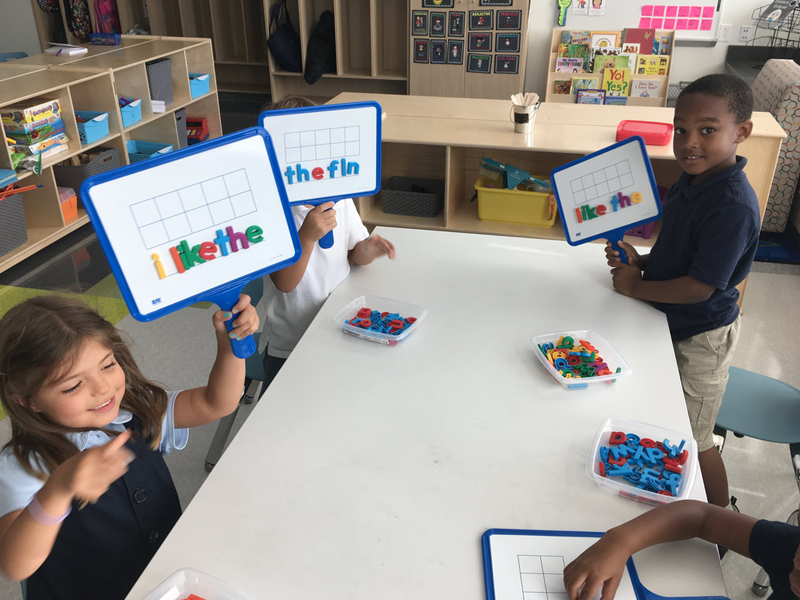
Open Storage Shelving for Sight Word Materials
Display rotating sets of flashcards, mini-books, and sentence strips from your sight word list for preschool using clean, open-access storage units. These foster independence while making daily exposure to preschool sight words effortless and consistent.
- Tiered trays for sorting pre primer sight words by difficulty
- Safe rounded corners and anti-tip design
- Easily integrates into themed learning centers
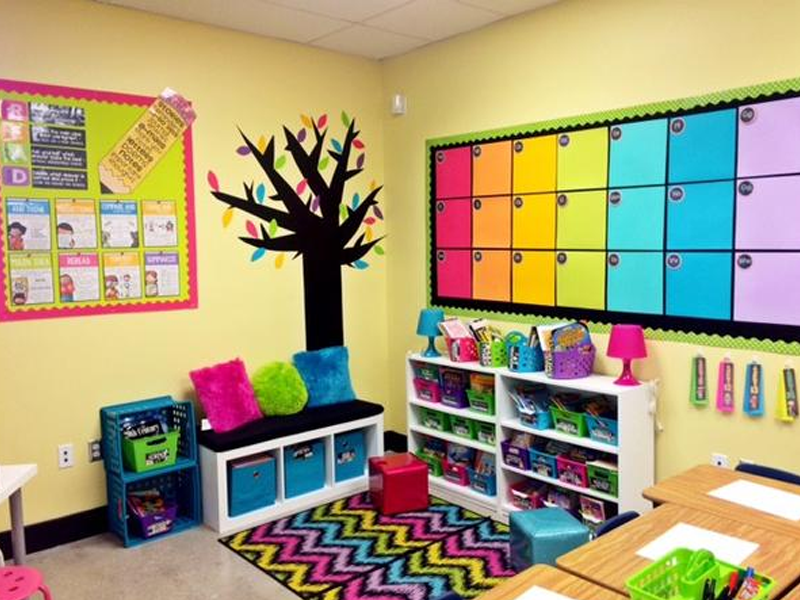
Writing & Tracing Stations
Support fine motor development and word formation with designated writing zones. These stations are ideal for shaving cream writing, sight word tracing, or interactive sentence building using dry-erase boards.
- Child-sized chairs with adjustable writing desks
- Surfaces for marker use, sand trays, or chalk work
- Enhances retention of dolch sight words list through multi-sensory repetition
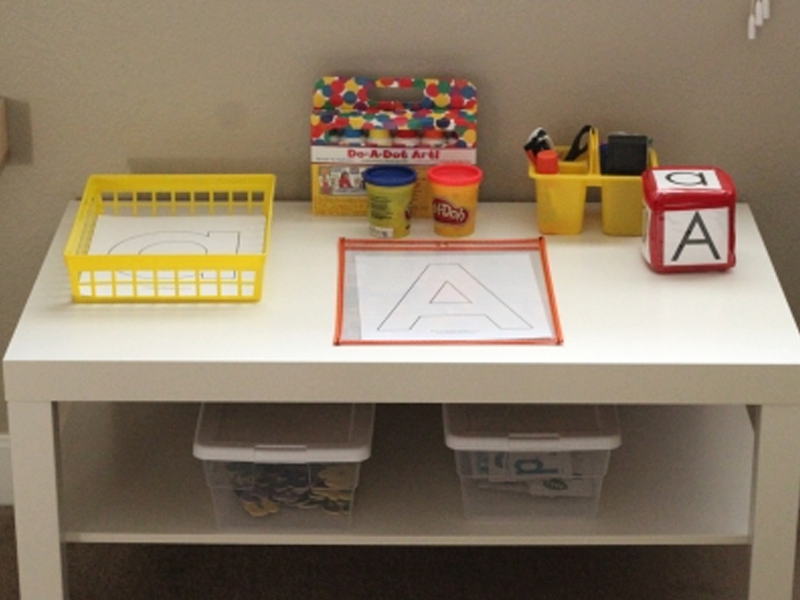
Montessori Work Trays for Individual Sight Word Practice
Independent tray work is a core component of the Montessori method. Our trays support activities like sight word parking, pancake matching games, and sound-letter puzzles, encouraging focused attention on one sight word at a time.
- Lightweight wood trays with compartment dividers
- Suitable for both literacy and phonics-based work
- Encourages autonomy in sight words for preschoolers
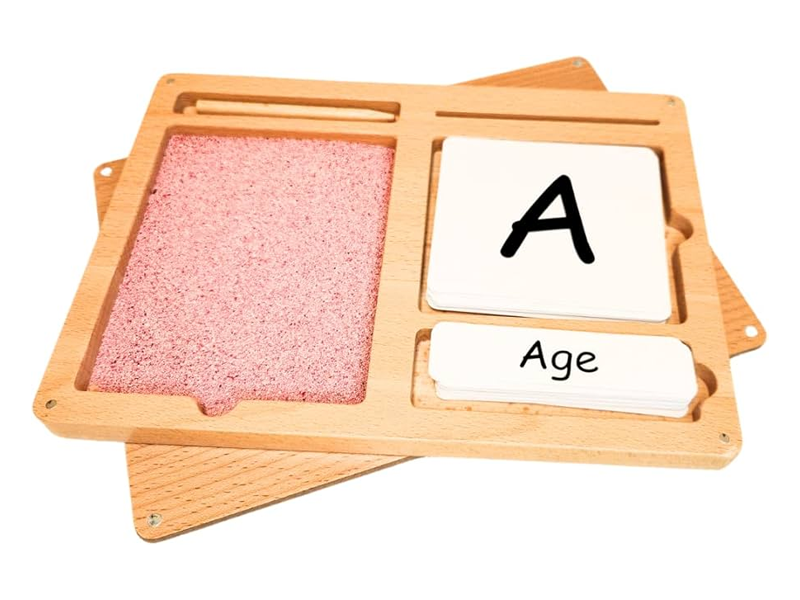
Teacher Resource Centers & Rotating Word Walls
For educators, organization is key. Our mobile resource cabinets and rotatable wall displays make it easy to update weekly sight word goals, showcase target vocabulary, and track group learning progress.
- Rotating vertical word strips
- Storage for Dolch/Fry sight word lists and activity sets
- Designed to support whole-class and small-group teaching
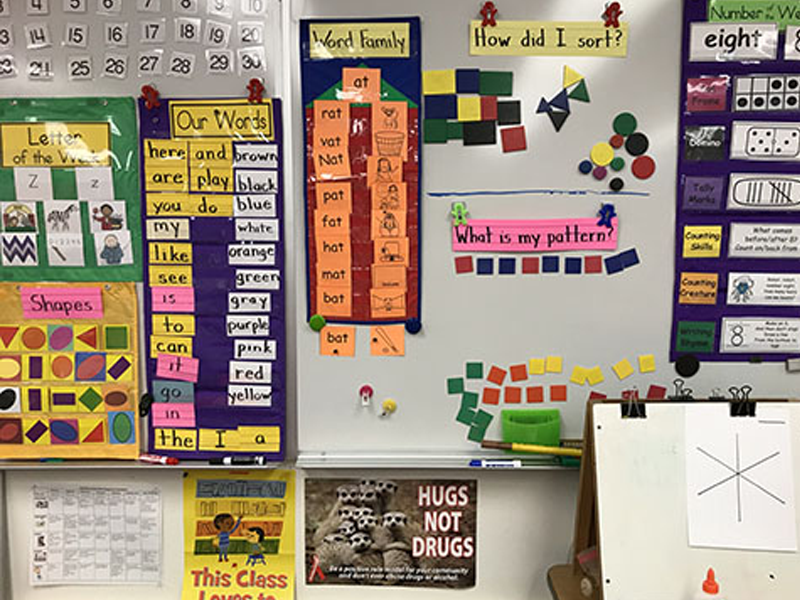
By combining these furniture solutions with a focused literacy program, educators can create an environment that organically reinforces preschool sight words through repetition, accessibility, and child-led exploration. Every piece from ซีฮา คิดส์ is designed to meet the safety standards, scale, and durability needed in high-traffic preschool environments.
Whether you’re furnishing a new school or upgrading specific learning zones, we offer factory-direct B2B pricing, custom materials, and expert layout consulting—ensuring every classroom supports the literacy journey, word by word.
ค้นพบผลิตภัณฑ์ทั้งหมดของเรา
เข้าถึงแค็ตตาล็อกที่ครอบคลุมของเราซึ่งมีเฟอร์นิเจอร์คุณภาพเยี่ยมและอุปกรณ์การเล่นสำหรับโรงเรียนอนุบาลและโรงเรียน
Common Mistakes When Teaching Sight Words to Preschoolers
Teaching preschool sight words is a critical step in building early literacy, but many educators and parents unintentionally undermine progress by using ineffective or inappropriate methods. Understanding and avoiding common mistakes can help ensure that young learners build a confident, lasting foundation in reading. Below are some of the most frequent errors made when teaching sight words for preschool—and how to correct them.
Teaching Too Many Words at Once
One of the most common mistakes is overwhelming children with long sight word lists early on. Preschoolers have limited working memory and benefit more from focused, repeated exposure to a small number of words. Introducing 2–3 pre k sight words per week allows learners to retain and apply them more effectively, rather than struggling to memorize a large batch without understanding.
Relying Solely on Flashcards
While flashcards are a useful tool, overreliance on them leads to passive memorization without context. Preschool sight words should be introduced through multiple methods—reading in context, movement games, sentence construction, and multi-sensory activities. Using only flashcards ignores the variety of learning styles found in early childhood settings.
Skipping Phonological Awareness
Although many dolch sight words are not phonetically regular, it’s still important to connect sound and structure when possible. For example, words like can, run, and big can reinforce beginning phonics skills. Ignoring this connection delays development in other reading areas. Sound-letter mapping activities can support this understanding, especially when working with sight words for pre k that include both regular and irregular patterns.
Lack of Repetition and Review
Children need consistent review to retain what they’ve learned. Teaching a word once and moving on leads to weak retention. Instead, incorporate previously learned pre primer sight words into future games, reading tasks, and classroom routines. Cumulative exposure strengthens recall and builds fluency over time.
Teaching Without Context
Teaching sight words in isolation, without placing them in full sentences or stories, limits comprehension. Children should learn to recognize words as part of meaningful language. Phrases like I see the cat or We go to play offer clear examples of how words are used functionally, which deepens understanding and prepares them for independent reading.
Not Tracking Progress
Failing to assess which sight words a child knows can result in repeated instruction of mastered words—or skipping over ones that are still unclear. Use informal assessments, word checklists, or simple “read and match” activities to monitor progress and adjust instruction accordingly. This ensures that time is spent reinforcing the right areas.
Avoiding these common pitfalls creates a more supportive, efficient, and developmentally appropriate environment for teaching preschool sight words. By combining structure with variety, consistency with creativity, and memorization with meaning, educators and parents can help young learners truly master the sight words for preschool that unlock the door to early literacy.
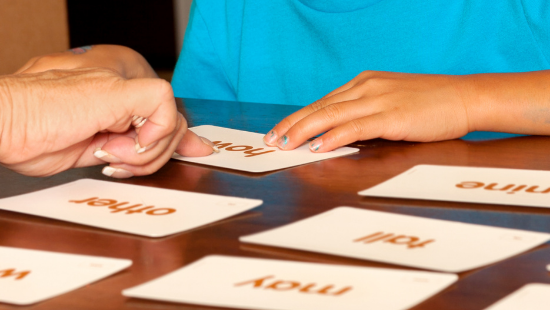
The Role of Sight Words in Montessori & Reggio Preschools
While Montessori and Reggio Emilia classrooms differ in structure and philosophy, both prioritize child-led learning and sensory-rich environments—making them well-suited for the effective introduction of preschool sight words. In both approaches, sight words for preschool are not taught in isolation but integrated meaningfully into everyday exploration, conversation, and play.
Montessori Approach to Sight Words
In Montessori classrooms, literacy is introduced through the “whole-to-part” method, where children experience language in context before analyzing individual components. Sight words are often introduced through:
- Labeling the environment: Montessori classrooms are filled with labels on shelves, materials, and stations. Words like the, this, me, or go—common entries from the dolch sight word list—are encountered naturally as part of the child’s environment.
- Movable alphabet work: As children form sentences using movable letters, they often build phrases using pre k sight words, supporting both composition and recognition.
- Classified cards and sentence strips: These are often used for self-correcting word matching games or reading tasks. Dolch sight words are introduced alongside nouns, verbs, and adjectives in real contexts rather than through drills.
Montessori educators tend to avoid rote memorization or flashcards. Instead, they offer freedom within limits, allowing the child to revisit and apply sight words through hands-on work and repetition embedded in practical life and sensorial tasks.
Reggio Emilia Approach to Sight Words
The Reggio Emilia method is highly inquiry-based and emphasizes expressive language through projects, art, and real-world documentation. While it may appear less structured in literacy teaching, sight words for preschool are still naturally embedded in the environment through:
- Documentation panels and learning walls: Teachers document children’s conversations and activities using printed captions. As children read their own words or those of their peers, pre primer sight words such as I, see, or we appear again and again.
- Project-based literacy: If a class is exploring the topic of plants, the word plant might be introduced alongside sight words like the, this, or can, creating a high-interest reading context.
- Interactive storytelling and dictation: Children dictate their ideas while the teacher writes them down. As the stories are reread, children begin recognizing repeated pre k sight words in their own narratives.
In Reggio classrooms, the goal is not to rush children into reading, but to create a literacy-rich environment where sight word recognition grows organically through dialogue, visual cues, and shared expression.
In both methods, preschool sight words are treated not as isolated vocabulary but as functional tools for self-expression, independence, and discovery. By embedding dolch sight words and other high-frequency terms into purposeful activities, Montessori and Reggio educators support natural language development—without pressure, drills, or disconnection from meaning. For school leaders and procurement professionals, this understanding is essential when selecting teaching materials, furniture layouts, and visual aids that align with child-led, literacy-rich pedagogies.
Fun Games & Activities for Sight Words Learning
1. Sight Word Bingo
Overview:
Sight Word Bingo is a high-engagement group activity that helps young learners recognize and recall preschool sight words in a playful, low-pressure setting. The game supports word recognition, listening skills, and visual scanning—all essential components of early reading fluency. It’s especially effective for reinforcing words from the dolch sight word list and is commonly used in both preschool and pre-K classrooms.
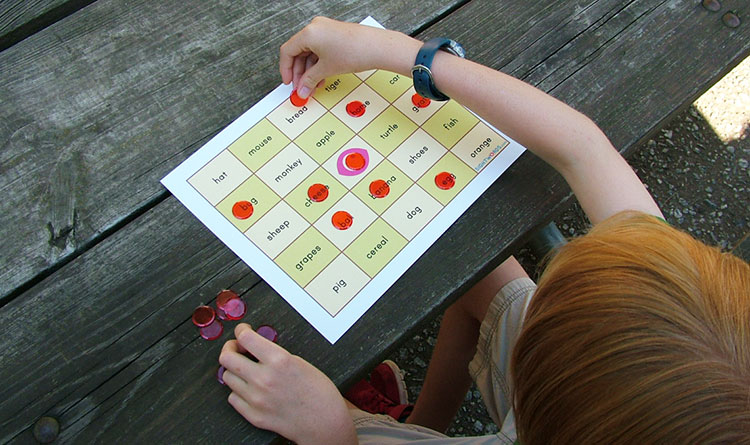
วัสดุ:
- Custom Bingo cards with 3×3 or 4×4 grids filled with sight words for preschool
- A teacher’s master sight word list for calling words aloud
- Markers, counters, or small tokens
- Optional: small prizes or stickers for winners
- Word pool selected from the dolch pre primer words or other grade-appropriate lists
Setup:
Create multiple Bingo cards with a variety of pre k sight words from your instructional set. Ensure each card has a different combination of words. Prepare a master list for calling out sight words. Distribute cards and markers to each student, and make sure all words used align with your current preschool sight word list.
Instructions:
- Begin by explaining the rules and showing an example word on the board, using a word such as the or come from the dolch sight words list.
- Call out one sight word at a time. As you say the word, show it on a card or flashcard for visual reinforcement.
- Children search their Bingo cards for the word and place a token on it if found.
- The first student to cover a complete row, column, or diagonal shouts “Bingo!”
- Review the winning card together to reinforce correct word recognition.
- Continue playing new rounds to allow more children to participate and reinforce more words.
This game is a powerful supplement to any curriculum that includes sight words for pre k, giving students repeated exposure to high-frequency vocabulary in a fun, social format. It’s also a great way to assess recognition skills informally and adjust future instruction based on the words children consistently miss.
2. Sight Word Tracing
Overview:
Sight Word Tracing helps children internalize the spelling and structure of preschool sight words through repeated tactile and visual interaction. This fine motor activity not only supports handwriting development but also builds sight word recognition by reinforcing each letter in sequence. It is particularly useful when introducing sight words for preschool learners who are developing early writing skills.
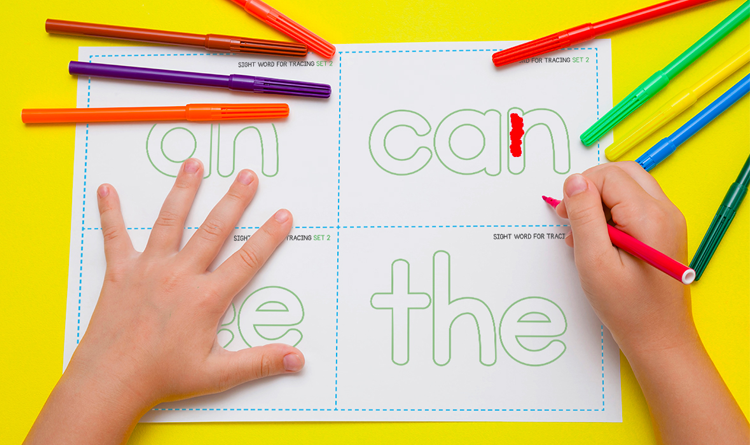
วัสดุ:
- Printed tracing worksheets featuring target pre k sight words
- Pencils, crayons, or markers
- Laminated sheets with dry-erase markers (optional for reuse)
- Word list sourced from the Dolch sight word list or other age-appropriate sight word lists
- Optional: sand trays, finger tracing cards, or textured letter paths
Setup:
Select a small group of pre primer sight words suitable for your learners’ current level. Prepare worksheets or dry-erase cards that show the word in dotted font for tracing. If using tactile materials, set up a station with sand or textured surfaces for finger tracing. Ensure children are seated comfortably with enough space to practice.
Instructions:
- Introduce the target words from the dolch sight words list and pronounce each word clearly.
- Demonstrate how to trace each letter using a model word. Encourage children to say the word aloud as they trace it.
- Have students trace the word multiple times using different colors or tools (e.g., pencil, crayon, marker).
- For a multisensory option, let students trace the same words with their fingers in sand or on textured cards.
- Reinforce learning by asking children to identify the word in a sentence or on a nearby word wall.
By combining motor skills with visual repetition, this activity strengthens memory pathways and supports the automatic recognition of site words—especially beneficial for visual and kinesthetic learners. Tracing is an ideal support tool when teaching foundational words from the dolch reading list or preparing children for future kindergarten sight word lists.
3. Sight Word Hopscotch
Overview:
Sight Word Hopscotch transforms a classic movement game into an interactive literacy activity that reinforces preschool sight words through physical play. This kinesthetic method helps children make strong connections between movement and memory, making it easier to recall sight words for preschool learners who respond well to hands-on instruction.
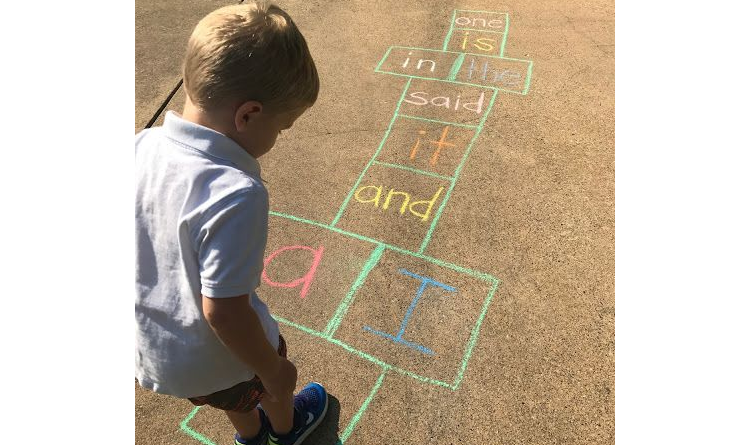
วัสดุ:
- Sidewalk chalk or painter’s tape (for outdoor or indoor play)
- A list of selected pre k sight words from your classroom curriculum or the Dolch sight word list
- Space large enough for hopscotch layout (floor, playground, gym area)
Setup:
Create a hopscotch grid using chalk (outdoors) or tape (indoors), and write one sight word in each square. Select words from your current sight word list, keeping difficulty level appropriate to the learners. The grid can be adjusted in size depending on the age group and number of words being practiced.
Instructions:
- Show students the hopscotch board and read each sight word aloud together.
- Call out one word at a time from your master dolch sight words list.
- Students take turns tossing a beanbag (or soft object) onto the grid.
- They then hop through the board, reading each word they land on aloud. If the tossed object lands on a square, they skip that square but still read the word.
- After several rounds, replace the words on the board to practice a new set from your pre primer sight words or pre k sight words list.
This activity helps children recognize high-frequency words in a dynamic and playful context. It is especially effective for reinforcing dolch sight word recognition while supporting gross motor development. When paired with regular classroom instruction, Sight Word Hopscotch makes literacy learning active, memorable, and enjoyable.
4. Sight Word Scavenger Hunt
Overview:
Sight Word Scavenger Hunt is a high-energy literacy game that encourages children to search, read, and recognize preschool sight words hidden throughout the learning environment. This activity combines movement with focused word recognition, making it ideal for reinforcing sight words for preschool learners in both home and classroom settings.
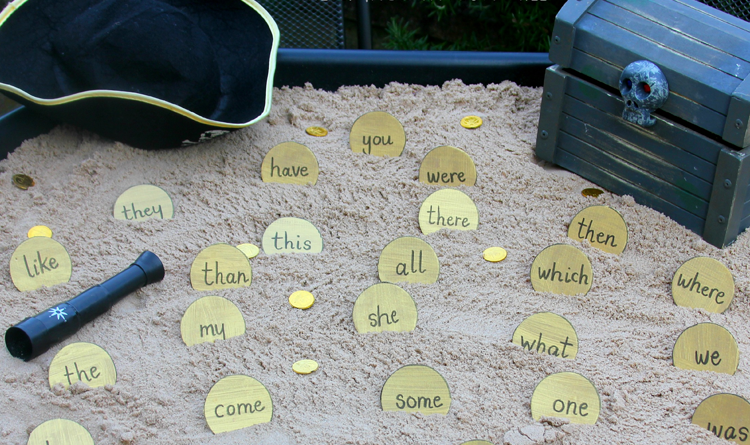
วัสดุ:
- Printed cards with pre k sight words (laminated for reuse if possible)
- Word list selected from the Dolch pre-primer sight word list or customized sight word list for preschool
- Checklists for students (optional)
- Tape or small clips for attaching word cards
Setup:
Select 10–15 words from your current dolch sight word list that students are learning. Write or print each word on individual cards. Hide the cards around the classroom, hallway, or outdoor play area—making sure they’re visible but require some effort to find. Prepare a checklist with all the hidden words listed for each student to mark off.
Instructions:
- Review all target words with the group before beginning. Pronounce each word and, if needed, use it in a sentence.
- Give students a checklist and explain that they will search the space to find all the hidden sight words.
- As children find each card, they read the word aloud and mark it off on their list.
- For added challenge, ask them to use the word in a sentence after finding it.
- Once all words have been found, gather as a group to review the full sight word list and celebrate their success.
This activity supports sight word recognition through active engagement and repetition, helping to embed words from the dolch sight word list into long-term memory. It also encourages problem-solving, builds confidence, and can be easily differentiated based on the learners’ reading levels.
5. Sight Word Mystery Box
Overview:
Sight Word Mystery Box is a tactile and exploratory activity that adds an element of curiosity and surprise to preschool sight word instruction. This game encourages children to connect words with physical objects, making sight words for preschool more meaningful and easier to recall. The activity is ideal for small group work or literacy centers.
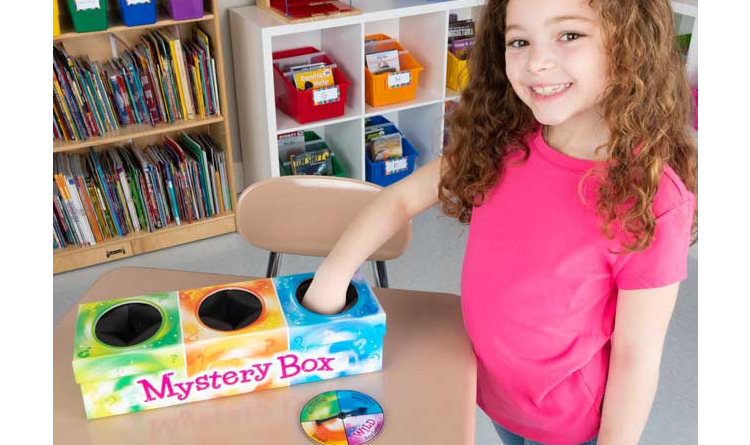
วัสดุ:
- A sturdy box with a covered opening (“mystery box”)
- Small objects or props that match common pre k sight words (e.g., toy cat for “cat,” spoon for “eat”)
- Word cards corresponding to each object, using words from your dolch sight word list or customized sight word list
- Optional: a recording sheet for matching words to objects
Setup:
Place 5–10 familiar objects inside the box, each representing a word from your current pre primer sight words or preschool sight words list. Prepare matching sight word cards and place them face-up on a table. Ensure the opening to the box is small enough to prevent children from seeing inside, prompting them to use only their hands and sense of touch.
Instructions:
- Invite a student to reach into the mystery box and feel one object at a time—no peeking allowed.
- Once the child identifies the object by touch, they pull it out and try to find the correct matching sight word card.
- After selecting the word, they read it aloud. Encourage them to use the word in a simple sentence.
- Continue until all objects have been matched with the correct dolch sight words.
- Review all words at the end of the activity and place them on the classroom’s word wall for reinforcement.
This multisensory approach builds strong associations between abstract words and real-world concepts. For children who benefit from tactile learning, the Sight Word Mystery Box adds a powerful and memorable layer to mastering early literacy vocabulary, especially when working through structured lists like the dolch sight word list.
6. Sight Word Fishing
Overview:
Sight Word Fishing is a hands-on activity that helps children practice recognizing and reading preschool sight words in a fun, game-like setting. By simulating a fishing experience, this activity adds excitement and physical involvement to word identification, making it ideal for both individual and small group instruction. It’s especially useful for reinforcing sight words for preschool learners who benefit from movement and repetition.
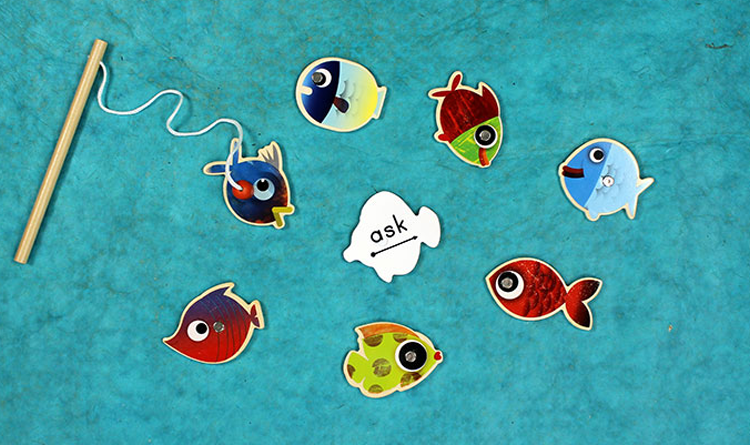
วัสดุ:
- Paper fish cutouts or laminated cards with pre k sight words written on them
- Small paperclips (attached to each “fish”)
- Toy fishing poles with magnets on the string (or sticks with string and magnets attached)
- A large bin, tub, or floor mat to serve as the “pond”
- Word list selected from the Dolch sight word list or class-specific sight word list for preschool
Setup:
Write one sight word on each fish cutout, using developmentally appropriate words from the dolch sight word list or your current classroom focus. Attach a paperclip to each fish to allow for magnetic pickup. Scatter the fish in a large container, blue mat, or simulated “pond” area. Prepare the magnetic fishing poles ahead of time.
Instructions:
- Review the target words with students before beginning. Use flashcards or your classroom’s word wall.
- Let each child take turns “fishing” for one word at a time using the magnetic pole.
- When they catch a fish, they must read the sight word aloud.
- For reinforcement, ask them to use the word in a short phrase or sentence.
- Set challenges such as “catch 3 words that begin with the letter S” or “find two dolch sight words you’ve seen in a book.”
- Continue the game until all words have been identified and read correctly.
Sight Word Fishing turns repetition into reward, helping preschoolers connect reading with fun. It also builds gross motor coordination, making it an ideal literacy center activity. Whether you’re reviewing pre primer sight words, introducing new vocabulary, or assessing fluency with a familiar sight word list, this activity provides a dynamic way to reinforce essential reading skills.
7. Sight Word Snowball Fight
Overview:
Sight Word Snowball Fight is a high-energy indoor or outdoor game that transforms preschool sight word practice into an exciting physical activity. By combining movement with literacy, this game helps reinforce rapid word recognition in a playful and socially interactive format. It’s particularly effective for learners who benefit from kinesthetic engagement while reviewing sight words for preschool.
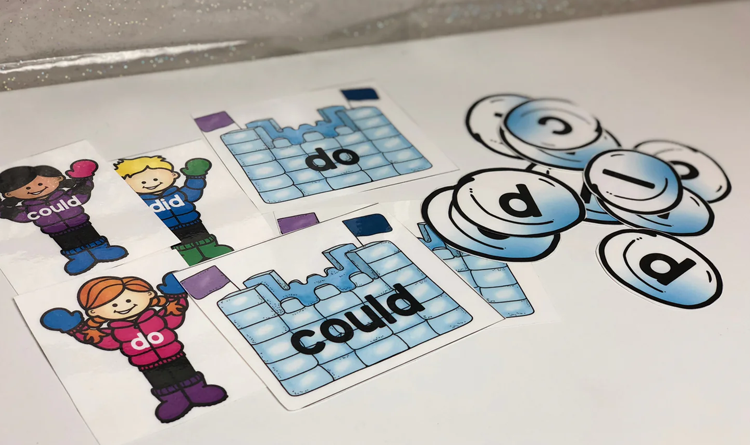
วัสดุ:
- White paper (cut into quarters or A6 size)
- Markers or bold pens
- A list of target pre k sight words or words selected from the dolch sight word list
- Open space (classroom, gym, or playground)
- Optional: large labeled baskets for sorting
Setup:
Write one sight word on each piece of paper, using a bold, clear font. Choose words from your current sight word list for preschool, such as we, go, play, blue, or help. Crumple each paper into a “snowball.” Scatter the snowballs in a designated area or place them in a central bin.
Instructions:
- Begin with a quick review of the selected dolch sight words, either using flashcards or the class word wall.
- Explain the rules: when the signal is given, students will throw and toss the “snowballs” around the room for 30 seconds.
- After the time is up, each child must pick up one snowball, open it, and read the sight word aloud.
- For extra reinforcement, ask students to spell the word or use it in a sentence.
- Repeat for several rounds, rotating the snowballs so each child encounters a variety of pre primer sight words.
- Optionally, have children sort words into categories—such as verbs, colors, or “words that start with W”—for added vocabulary extension.
This dynamic and cooperative game encourages repeated exposure to common preschool sight words while keeping students active and engaged. It’s an excellent tool for indoor movement breaks that still support early literacy objectives and promote memory retention of the dolch word list.
8. Sight Word Parking Lot
Overview:
Sight Word Parking Lot is a motor skills–based activity designed to strengthen recognition of preschool sight words through hands-on, imaginative play. This game combines toy cars with reading practice, making it especially appealing to children who love movement and pretend play. It reinforces word familiarity through repeated interaction with targeted vocabulary from a structured sight word list.
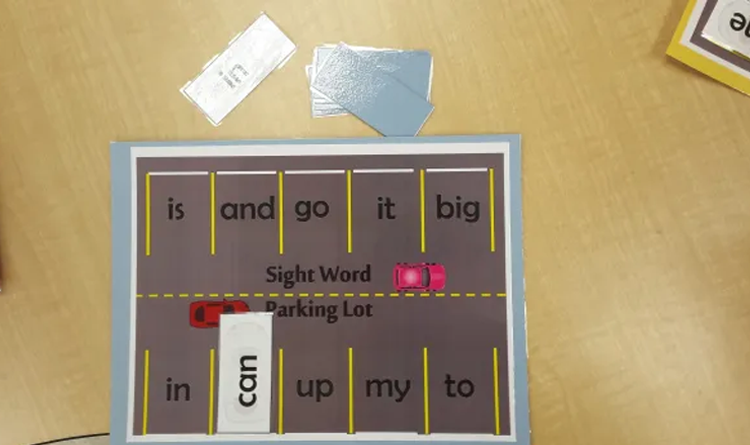
วัสดุ:
- Toy cars (at least one per student)
- Large poster board, cardboard, or floor space
- Masking tape or chalk (to draw parking spaces)
- Prewritten sight words for preschool on index cards or printed labels
- Word list based on the Dolch sight word list or pre primer sight words
Setup:
Create a “parking lot” by drawing parking spaces on the poster board or floor using tape or chalk. Label each parking space with a different pre k sight word from your teaching focus or from a standard dolch sight word list. Write matching sight words on the tops of the toy cars using removable tape or labels.
Instructions:
- Review all target words with the class. Focus on clear pronunciation and visual recognition.
- Give each student one toy car with a sight word label.
- Instruct them to find and “park” their car in the space with the matching sight word.
- Once parked, ask them to read the word aloud and spell it.
- Repeat the activity by switching cars or parking spots to reinforce additional preschool sight words.
- Extend the activity by asking students to form simple sentences using the word their car “drove” to.
This activity supports recognition, matching, and recall of sight words for preschoolers in a way that’s interactive and play-based. It also integrates fine motor development and symbolic reasoning—two important skills in pre-kindergarten literacy development. Whether used in a small group, literacy station, or one-on-one session, Sight Word Parking Lot is a playful and effective method for reinforcing words from any dolch reading list.
9. Sight Word Bowling
Overview:
Sight Word Bowling is a fun and active literacy game that allows children to practice preschool sight words while improving coordination and focus. By combining physical activity with sight word recognition, this game is particularly effective for kinesthetic learners and can easily be incorporated into both classroom and home learning environments.
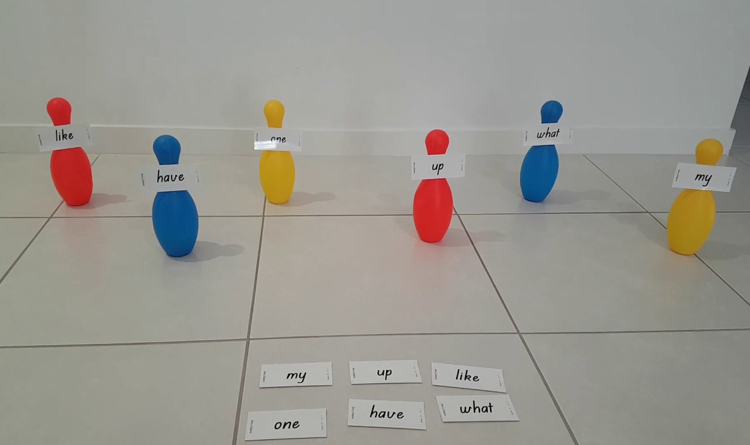
วัสดุ:
- 6–10 empty plastic bottles or bowling pins
- Small soft ball (such as a foam ball or beanbag)
- Sticky labels or printed cards with sight words for preschool
- Word list selected from the Dolch pre primer sight word list or your custom pre k sight words list
- Marker (for hand-labeling bottles if needed)
Setup:
Label each bottle or pin with a different sight word. Choose words from your current instructional set, such as the dolch sight word list, focusing on words students have recently learned or are currently reviewing. Arrange the pins in a standard bowling triangle formation at the end of a smooth surface (hallway, classroom floor, etc.).
Instructions:
- Review the target words with the students before beginning the game.
- Let each child take a turn rolling the ball toward the pins.
- After their roll, ask the child to read aloud each word from the pins they knocked down.
- For reinforcement, have them spell one of the words or use it in a short sentence.
- Reset the pins and repeat the game, rotating students and changing word sets as needed.
Sight Word Bowling makes repeated exposure to pre k sight words enjoyable and dynamic. It’s an excellent literacy center rotation, movement break, or reward activity that still aligns with early reading goals. Over time, students gain fluency with high-frequency words in a memorable and meaningful way—especially when words are drawn from structured sets like the dolch sight words list.
10. Pancake Matching Game
Overview:
The Pancake Matching Game is a hands-on literacy activity designed to help children master preschool sight words through visual discrimination, word recognition, and playful repetition. Modeled after flipping pancakes, this game turns word practice into an imaginative cooking experience, making it highly engaging for young learners. It’s ideal for small group work or literacy centers focused on sight words for preschool.
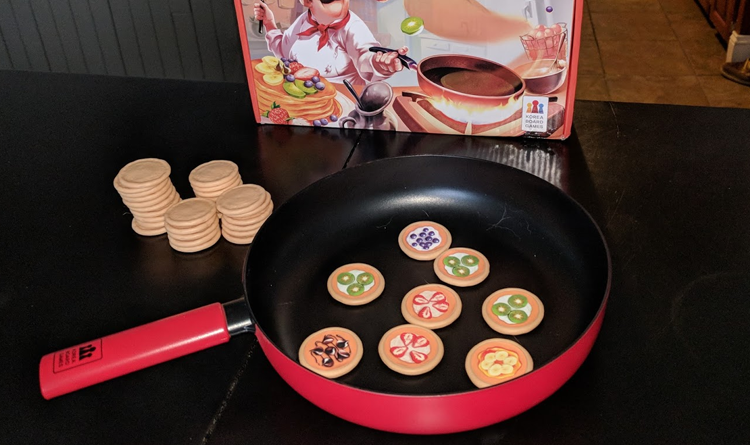
วัสดุ:
- Circular brown paper cutouts (“pancakes”)
- A griddle or skillet prop (felt mat, tray, or actual toy skillet)
- Plastic spatula or large spoon
- Matching pre k sight words written on both sides of each pancake
- Word list selected from the Dolch pre primer sight word list or classroom word wall
Setup:
Write matching sight words on both sides of each paper pancake. Prepare a set of at least 10–15 pancakes using words currently being taught from your sight word list for preschool. Scatter the pancakes “face down” on the griddle area or mat.
Instructions:
- Review the day’s focus words with the class before beginning.
- Invite a child to use the spatula to “flip” one pancake from the griddle.
- Once flipped, the child reads the sight word aloud and places it on a “done” plate or stack.
- If they misread the word, return it to the griddle for another turn later.
- Continue until all pancakes have been flipped, read, and stacked correctly.
- For extended practice, students can pair pancakes with matching flashcards or write the word in a sentence.
This game provides repetitive exposure to words from the dolch sight word list, while keeping the learning experience active and fun. It’s especially effective for reinforcing early pre k sight words and helps build confidence in word recognition through immediate, tactile feedback.
11. Sight Word Twister
Overview:
Sight Word Twister is a physical literacy game that combines body movement with early reading development. Adapted from the classic Twister format, this activity is designed to help children practice recognizing preschool sight words while improving coordination and spatial awareness. It’s ideal for classrooms that integrate active play into literacy instruction and works particularly well for reinforcing sight words for preschool in a group setting.
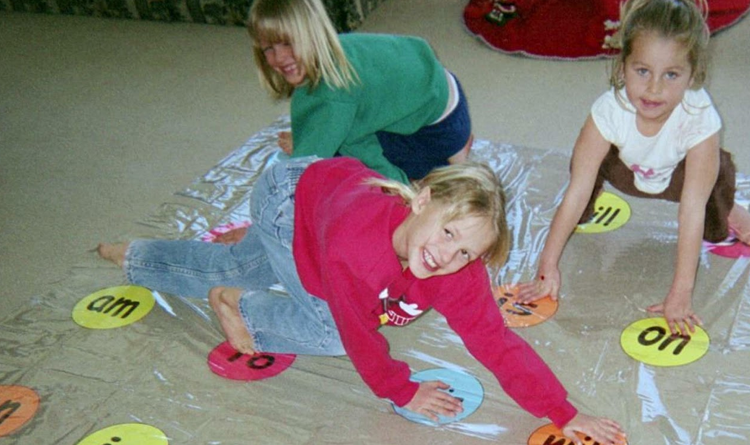
วัสดุ:
- Twister mat or large floor grid made of colored paper/tape
- Prewritten pre k sight words or words from the Dolch sight word list
- Spinner or a teacher-led cue system
- Word list aligned with your current curriculum focus
Setup:
Label each colored circle or square on the mat with a different sight word. Choose words from your active sight word list for preschool, keeping a mix of easier and slightly more advanced terms. If you don’t have a Twister spinner, create a set of instruction cards that specify which hand/foot to place on which word.
Instructions:
- Begin by reviewing all the sight words on the mat with the group. Say each word aloud and ask students to repeat it.
- Call out a command such as: “Right hand on blue – word: come” or “Left foot on yellow – word: we.”
- Students respond by placing the correct body part on the matching sight word.
- Continue calling out combinations, gradually increasing speed or complexity.
- When the game ends, review the words students interacted with and reinforce any that were misidentified.
Sight Word Twister combines movement, balance, and vocabulary development, offering a multisensory approach to mastering pre primer sight words and other high-frequency terms. It also fosters peer interaction and excitement, making it a strong addition to a kinesthetic learning classroom focused on dolch sight words.
12. Fill in the Blank
Overview:
Fill in the Blank is a literacy activity designed to strengthen sentence comprehension and word recognition by having children insert appropriate preschool sight words into simple sentences. This activity helps students understand how sight words for preschool function within the context of language, improving both reading fluency and grammar awareness.
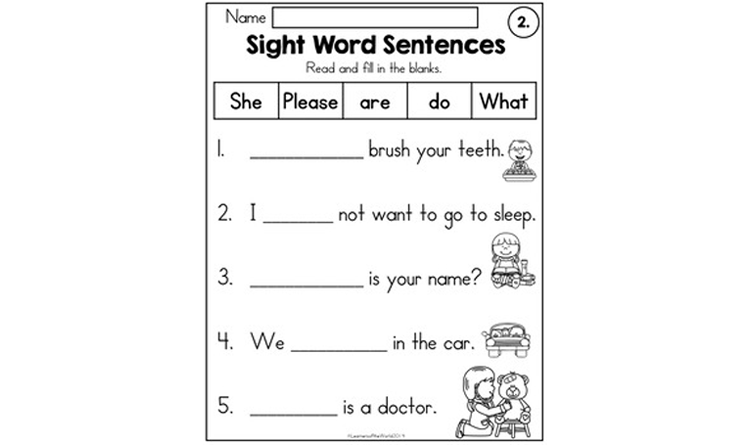
วัสดุ:
- Printed sentence strips or worksheets with missing pre k sight words
- Word cards or a bank of dolch sight words to choose from
- Dry-erase boards and markers (optional for reusable practice)
- Word list selected from the dolch sight word list, such as the, is, go, play, we, etc.
Setup:
Prepare a set of 8–12 simple sentences, each missing one high-frequency word. For example:
- “I ___ to school.”
- “We ___ the dog.”
Leave a blank space for the missing sight word and provide students with 2–3 word options per sentence, based on your active sight word list for preschool.
Instructions:
- Review the list of available sight words with the class. Emphasize pronunciation and meaning.
- Distribute sentence strips or worksheets. Go through one example together.
- Students read each sentence and choose the correct pre k sight word to complete the meaning.
- After inserting the word, they read the full sentence aloud to check fluency.
- Optionally, ask students to write their own “fill in the blank” sentence using one of the day’s target words.
This activity reinforces both recognition and usage of dolch sight words, helping students move from isolated word identification to meaningful reading. It also prepares them for more advanced comprehension tasks by making them aware of sentence structure, especially when working with foundational words like the, is, me, and see from the dolch pre primer sight words list.
13. Sound-Letter Mapping
Overview:
Sound-Letter Mapping is a phonological awareness activity that helps children identify individual sounds within preschool sight words and connect those sounds to corresponding letters. Although most sight words for preschool are learned by visual recognition, mapping sounds to letters provides additional reinforcement, especially for words with partially decodable elements like can, not, or big. This activity bridges phonics and sight word acquisition.
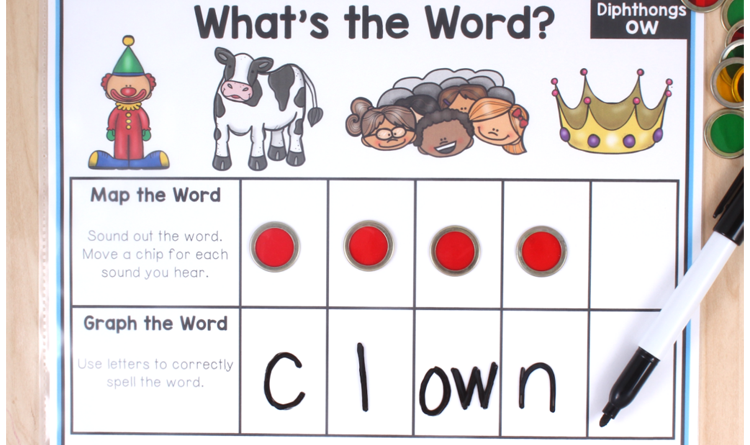
วัสดุ:
- Word cards featuring pre k sight words from the dolch sight word list
- Sound boxes (Elkonin boxes)
- Letter tiles, letter magnets, or writeable markers
- Dry-erase boards or printable worksheets
- Selected word list aligned with sight word list for preschool
Setup:
Choose 6–10 sight words that are partially decodable and appropriate for your group (e.g., can, in, not, run, big). Prepare word cards for demonstration, and provide each student with a sound box worksheet or board. Make sure students have access to alphabet tiles or markers for spelling.
Instructions:
- Display a sight word card and say the word aloud slowly, stretching out the sounds (e.g., c-a-n).
- Have students repeat the word and count how many sounds they hear (phonemes).
- Ask students to place one tile or write one letter in each sound box, focusing on matching the correct letter to each sound they hear.
- After mapping, students read the full word aloud and match it to the printed version of the sight word.
- Repeat with several words, gradually encouraging students to complete the mapping independently.
While not all dolch sight words are phonetically regular, this method supports recognition and spelling for those that are. For irregular words like said or the, teachers can use this activity to highlight which parts follow expected patterns and which do not. As part of a balanced literacy program, Sound-Letter Mapping gives children a deeper understanding of what sight words are and how they relate to phonics.
14. Classroom Spy
Overview:
Classroom Spy is an observational literacy game that encourages students to actively search for preschool sight words displayed throughout the classroom. This visual scanning activity builds word recognition skills by integrating sight words for preschool into the physical environment, helping children see literacy as part of their daily world. It’s ideal for reinforcing words from the dolch sight word list already introduced in class.
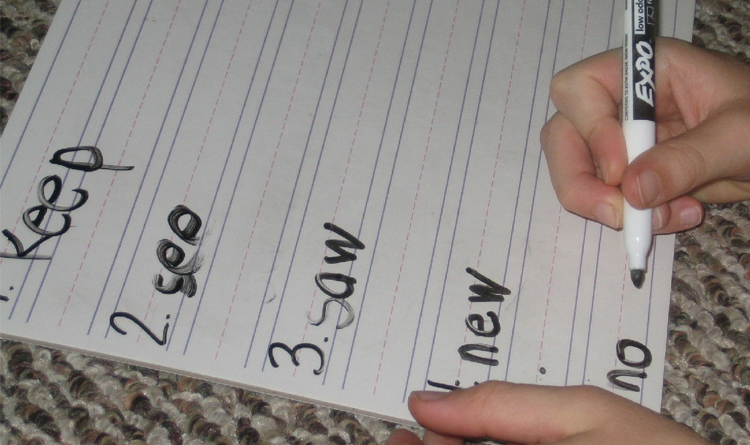
วัสดุ:
- Prewritten sight word cards (laminated for durability)
- Word list from your pre k sight words curriculum
- Clipboards or worksheets with blank lines or word checklists
- Pencils or markers
Setup:
Choose 10–15 pre primer sight words or age-appropriate vocabulary from your active sight word list for preschool. Write each word on a separate card and tape them in various places around the room (e.g., walls, bookshelves, cubbies, tables). Make some more obvious and others harder to find, depending on your students’ skill level.
Instructions:
- Explain that students will become “word spies” searching for hidden sight words around the classroom.
- Give each child a clipboard with a blank recording sheet or checklist of target words.
- As students walk around, they must find the sight words, read them aloud, and either write them down or check them off.
- After the activity, gather the group and review the found words together. Ask volunteers to spell or use one of the words in a sentence.
- Extend the activity by assigning a different group of dolch sight words the next day.
This low-prep, high-impact game supports visual literacy and strengthens memory retention. It’s particularly effective for reinforcing newly learned pre k sight words and integrating sight word exposure into the classroom environment in a natural and engaging way.
15. Drive a Sight Word
Overview:
Drive a Sight Word is a movement-based literacy activity that combines toy car play with preschool sight word recognition. By driving a small vehicle along word paths, children physically engage with reading tasks, making sight words for preschool more memorable and accessible—especially for kinesthetic learners and active classrooms.
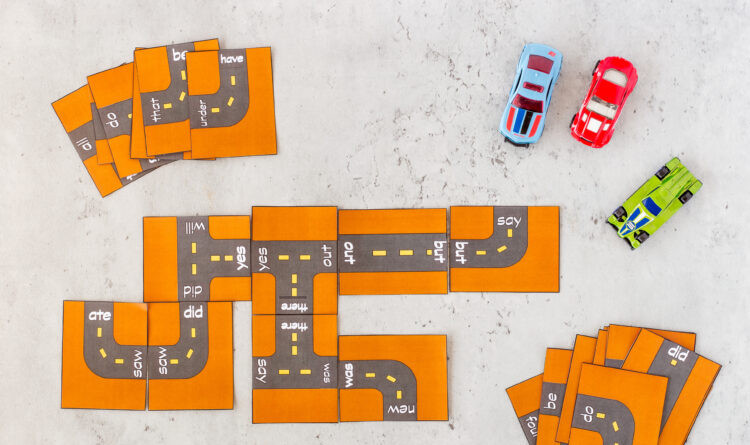
วัสดุ:
- Toy cars or small vehicles
- Large printed sight word road mats (or taped word paths on the floor)
- Traffic cones or paper road signs (optional for thematic engagement)
- Word list based on the dolch sight word list or class-specific pre k sight words
Setup:
Print or write sight words on large sheets of paper, creating “roads” that connect one word to another. Lay out a floor path using the words selected from your current sight word list for preschool. You may also build themed “driving zones” using traffic signs, stoplights, or cones for added interest.
Instructions:
- Review the pre k sight words that will appear on the roads before beginning.
- Give each child a toy car and explain that they will “drive” from word to word.
- As they arrive at each word, the student must stop, read the sight word aloud, and then proceed to the next one.
- Encourage repetition by having students drive along the word roads multiple times with increasing speed or in a set order.
- For additional practice, ask children to spell the word aloud or use it in a simple sentence after reading.
This activity transforms basic dolch sight word practice into an imaginative play scenario. It supports word recognition, sequencing, and verbal fluency, while also promoting fine motor control and spatial awareness. Drive a Sight Word can be used as a literacy center, small group activity, or even during transition times to maintain momentum in early reading instruction.
16. Shaving Cream Writing
Overview:
Shaving Cream Writing is a tactile and sensory-rich activity that helps reinforce preschool sight words through touch and repetition. This method allows children to physically form each letter of a word, deepening word memory and supporting both visual and kinesthetic learning. It’s especially effective for early learners who are beginning to internalize sight words for preschool and benefit from multi-sensory input.
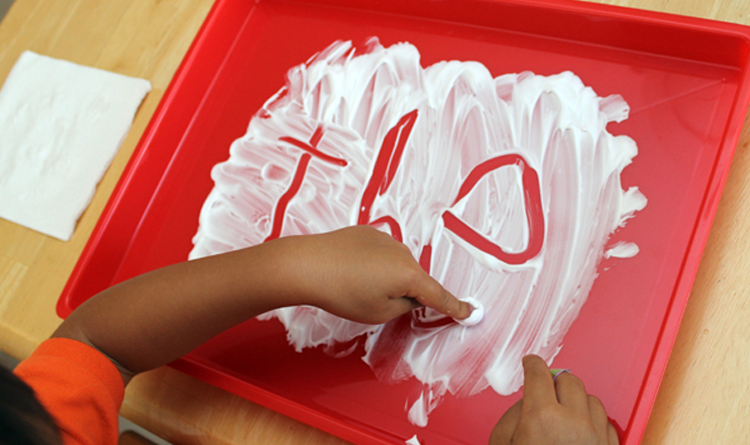
วัสดุ:
- Shaving cream (unscented, sensitive skin recommended)
- Laminated trays, desks, or baking sheets
- Paper towels or wipes for cleanup
- List of target pre k sight words (from classroom word wall or dolch sight word list)
- Optional: printed word cards for reference
Setup:
Spray a thin layer of shaving cream onto each student’s work surface. Select a set of 4–6 sight words from your current sight word list for preschool, focusing on words students need more exposure to. Make sure students wear smocks or old shirts if needed.
Instructions:
- Review the target dolch sight words before beginning. Pronounce each word clearly and model letter-by-letter spelling.
- Say the first word and ask students to write it with their fingers in the shaving cream.
- As they write, encourage them to say each letter and the full word aloud.
- Smooth the cream after each word and repeat with a new one.
- End the session by letting students choose their favorite word and write it without prompting.
This sensory-based activity supports retention by engaging multiple senses. Writing pre k sight words in shaving cream builds fine motor control, reinforces spelling, and adds variety to word practice routines. It’s a playful yet highly effective approach to mastering frequently used words from the dolch sight word list or any customized classroom word set.
บทสรุป
Mastering preschool sight words is one of the most impactful steps in helping children develop early reading confidence, fluency, and comprehension. From understanding what sight words for preschool are, to knowing how many to teach and how to introduce them with purpose, we’ve explored a comprehensive roadmap to building a strong literacy foundation. Whether you’re working within a traditional preschool curriculum, a Montessori or Reggio-inspired classroom, or teaching at home, using research-based strategies ensures that young learners engage with language in meaningful and joyful ways.
Equipping children with essential tools—like those found in the Dolch sight word list—is just one part of creating a literacy-rich learning environment. Equally important is the environment itself: the classroom layout, the daily flow, and the tools children interact with. In well-designed learning spaces, pre k sight words are embedded into daily life, whether through labeled shelves, interactive displays, or sensory-based literacy corners. That’s where thoughtful classroom design, supported by reliable providers like ซีฮา คิดส์, becomes a silent but powerful partner in early education. When the physical environment encourages natural reading behaviors, every sight word becomes more than a word—it becomes a step toward lifelong learning.



